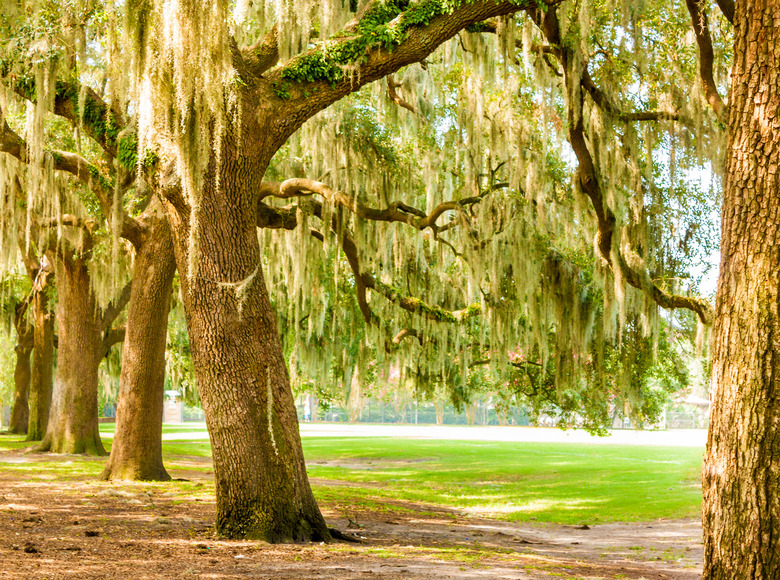What Is The Moss Hanging From Trees In The South?
Residents of the northern United States frequently see moss on trees, but most have never seen anything quite like Spanish moss (Tillandsia usneoides). Found hanging from tree limbs in tangled clumps, Spanish moss is a natural part of the South's ecology and an important habitat for many species, including birds and reptiles. Although natural and quite beautiful, Spanish moss can cause some problems for the trees it inhabits.
Identification of Spanish Moss
Identification of Spanish Moss
Despite its name, Spanish moss is not a really a moss at all. It's actually an epiphytic bromeliad. Quite a mouthful, epiphytic means that a plant grows attached to something else instead of on the ground in soil, and bromeliad refers to a scientific classification of tropical plant. Basically, Spanish moss is a tropical plant that grows on other plants.
As it grows, Spanish moss hangs from its host tree in dense curtains that can reach lengths of 20 feet or more. Most of the time the plant looks gray, but its leaves turn light green when exposed to moisture. Cup-like scales cover the leaves and capture water and nutrient-bearing dust particles from the air. During periods of drought, the plant simply goes dormant, awakening again when conditions improve.
Although inconspicuous, the plant's pale green or blue flowers are mildly fragrant at night. After flowering, Spanish moss produces tiny seed capsules that split open and spill their contents.
Trees and Other Habitats
Trees and Other Habitats
Spanish moss inhabits a number of tree species throughout the southeastern U.S. to Texas as a perennial in U.S. Department of Agriculture plant hardiness zones 8 through 11, wrapping around its hosts without rooting. Most often, you'll find Spanish moss on cypress and oak species such as the Southern live oak (Quercus virginiana) and the Italian cypress (Cupressus sempervirens), both hardy in USDA zones 7 through 10. The plant is adaptable, however, and will make itself at home in other types of trees as well. It may even hang out on telephone lines and fences if the location provides sufficient moisture and full sunlight to partial shade.
Common Spanish Moss Misconceptions
Common Spanish Moss Misconceptions
Contrary to what you may have heard, Spanish moss is not a parasite and doesn't leach nutrients or water from the trees it lives on. It makes its own food and only uses trees as a means of support and protection. That doesn't mean, however, that it never causes any damage.
Heavy concentrations of Spanish moss may cause trees to decline by preventing adequate sunlight from reaching their leaves. The weight of Spanish moss can also cause tree branches to break, especially after a heavy rain. If you have any concerns about the Spanish moss in your trees, you can hire an arborist to remove it. The plant is good at propagating itself, however, and will likely grow back.
You may also have heard that red bugs or chiggers, which are notorious for causing itchy rashes, reside in Spanish moss. This is mostly myth. While chiggers may take refuge in clumps of Spanish moss that have fallen onto the ground, they don't live in the Spanish moss actively growing on trees.
Benefits and Uses
Benefits and Uses
The ecological role of Spanish moss is an important one. Reptiles, bats, spiders and other animals all use the plant for protection and many bird species use the moss as a nesting material. The animals who shelter in Spanish moss also enjoy eating the many insects it harbors.
In the past, Spanish moss found its way into mattresses and was sometimes used as stuffing inside car seats. Today, the plant serves as packaging material and adorns floral arrangement, potted plants and craft projects. It's also used as a garden mulch and as a privacy screen when draped over fencing.
